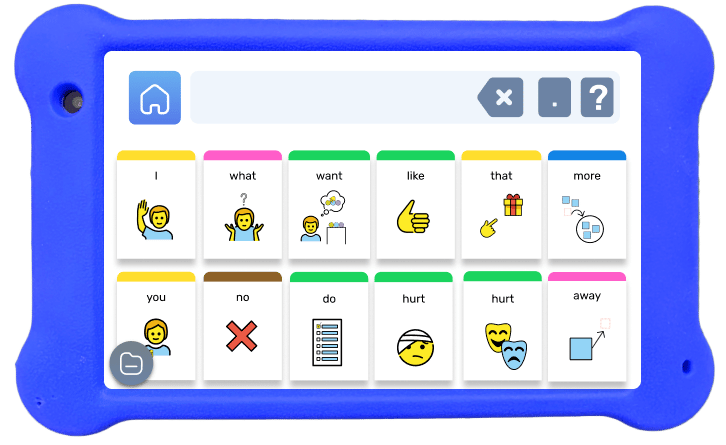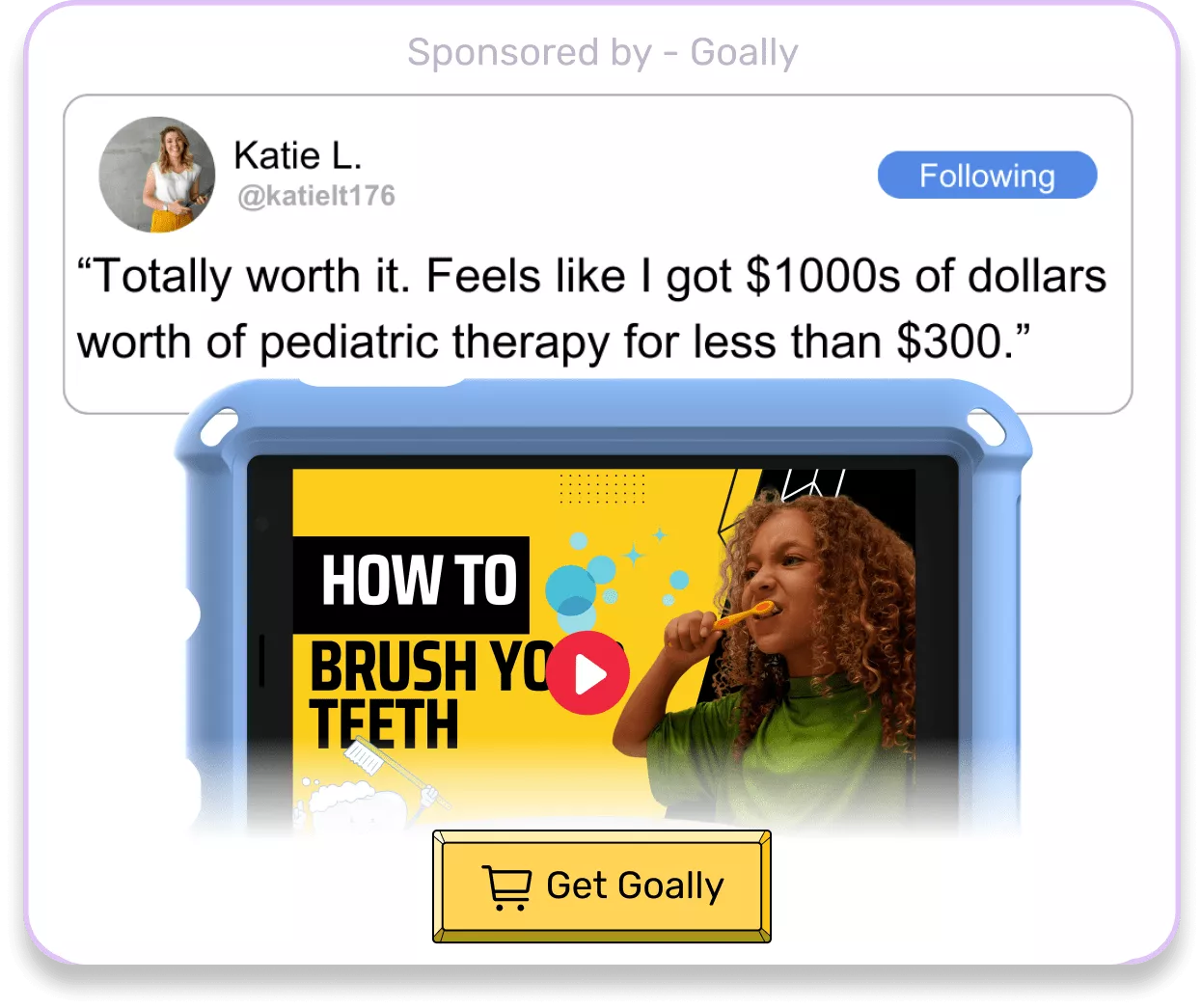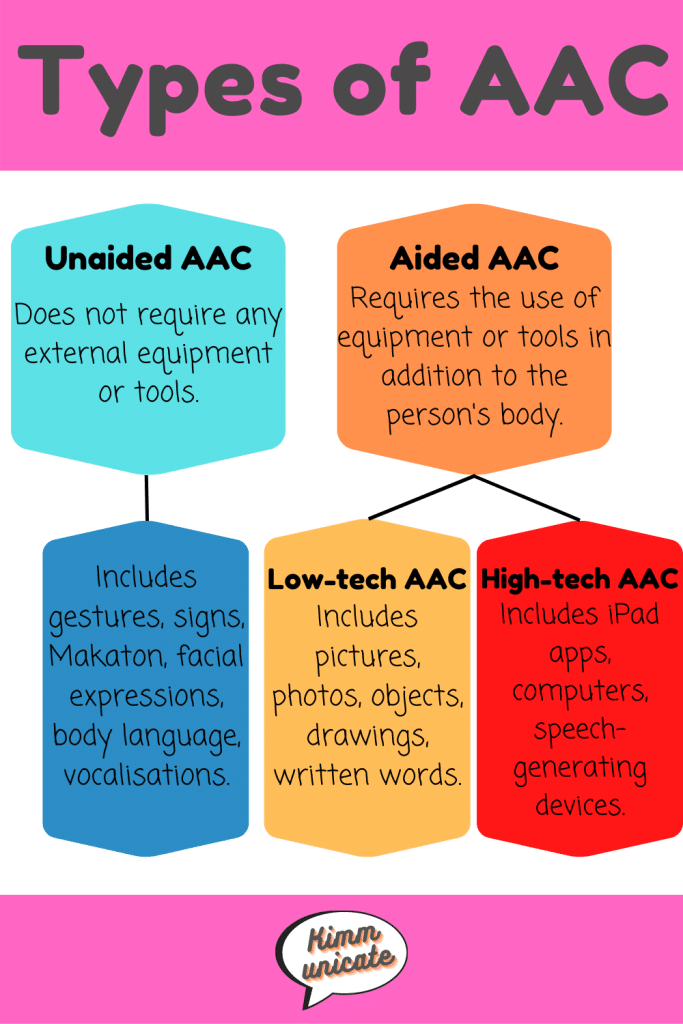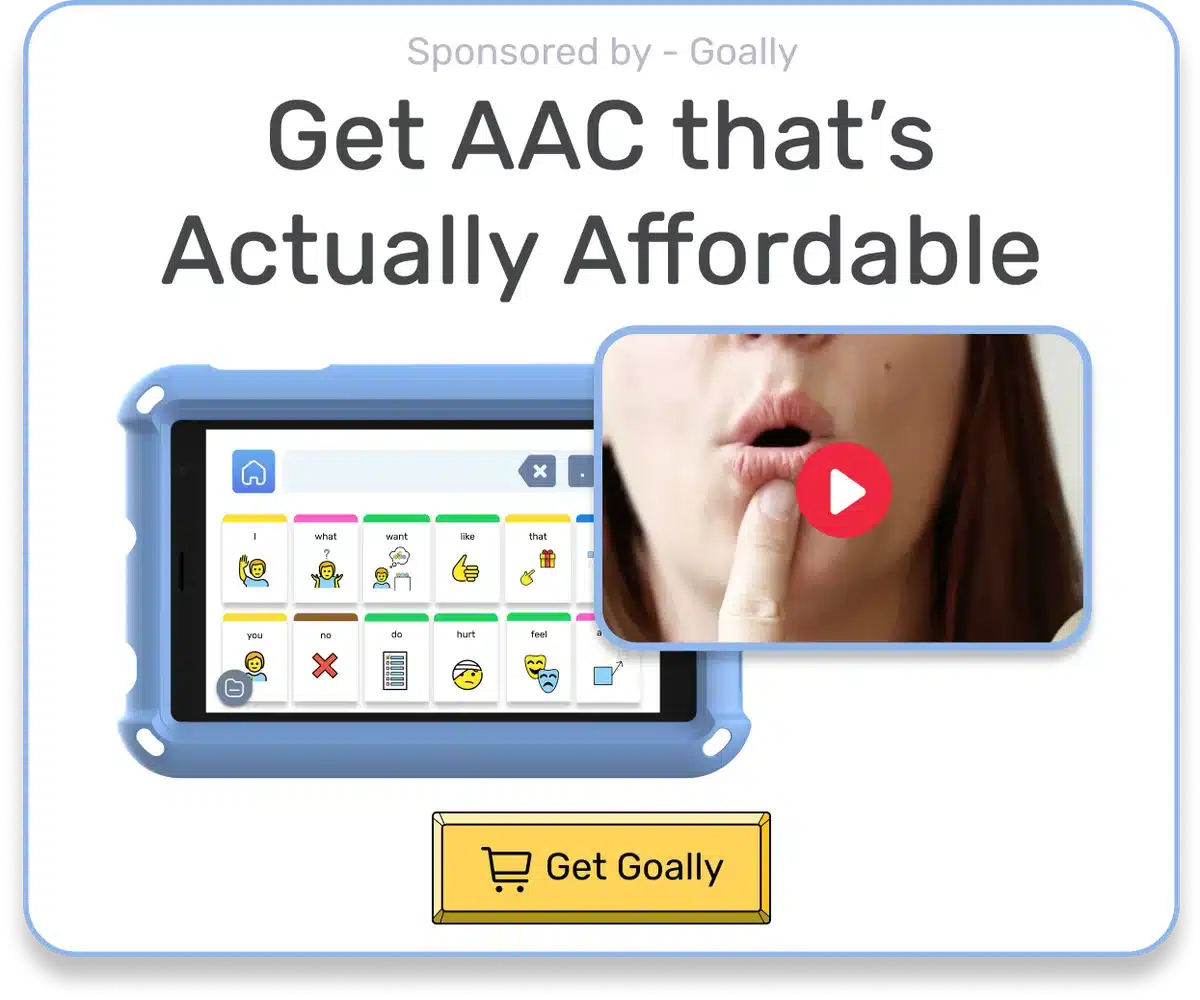When was the last time you keenly observed a toddler fervently pointing at a toy airplane, his wide eyes filled with wonder, even though he didn’t have the words to express his enthusiasm? That’s a crude yet effective form of communication. Similarly, in our world, words are not always sufficient to express what we feel or need, particularly for those who face challenges with speech. Enter AAC – Augmentative and Alternative Communication. This broad umbrella of tools and magic wands—ranging from quaint picture boards to sophisticated computer-based systems—lends a voice to those who grapple with communicating their thoughts and needs verbally. In this blog post, you’ll discover just what AAC is and how it revolutionizes the lives of children, particularly neurodivergent children, empowering them to bridge the communication gap effectively. But I’m not stopping there – we’ll also dig into the benefits of AAC, discuss examples, and explore how and when to consider its implementation in your routine.
Table of Contents
Breaking Down AAC – Knowing the Basics
“What is AAC?” You’d be surprised how something that seems complex is as simple as using a photo board or a computer-based system. It begins with the notion of AAC being an expansive practice area designed to compensate or bolster speech and language production and comprehension. It doesn’t matter your age – toddler or grandparent – if you find speech or language challenging, AAC supports you. – And yes, that includes your kiddos, too!
The Universality of AAC – Everyone’s Language Staple
Much like the air we breathe, communication should be accessible to everyone. AAC doesn’t discriminate – it’s a tool that breaks boundaries for those individuals who struggle with speech, primarily our neurodivergent kids. You wouldn’t deny water to a thirsty soul, would you? Likewise, why deny the means to express and connect to those who desperately need it?

- It doesn’t replace speech; rather, it enhances it.
- It’s adaptable, whether there are minor speech problems or more complicated ones.
- It’s inclusive and can be used by anyone who finds verbal communication challenging.
Exploring Tools in the AAC Toolbox
Think of AAC like a toolbox – there’s not just a one-size-fits-all hammer. Every tool has a specific task and is designed uniquely, right? The beauty of it is that it includes a variety of communication methods to fit individual needs. Let me further clarify.
| Type of AAC | Description |
|---|---|
| Unaided Communication | Bodily behaviors like gestures, expressions; no tech required |
| Aided Communication – Low Tech | Picture boards, flashcards; light tech, low cost |
| Aided Communication – High Tech | Speech-generating devices or apps for tablets – requires technology |
Unfolding the Why and When of AAC
But, however essential AAC may be, it’s natural to question when and why it is appropriate for your kid. For example, a child with autism might struggle to express their needs verbally, which can cause frustration. Implementing AAC strategies can provide them with an alternate, accessible form of communication, curbing that frustration and opening up a new world of interaction.

Read more: Teaching Sign Language to a Non Vocal Child with Autism
The Why
Most importantly, AAC promotes independence, social interactions, and self-expression, creating an empowering space for neurodivergent children. It also decisively decreases frustration— consequently reducing behavior concerns. After all, wouldn’t you feel peeved if you had lots to say but struggled to express it?
The When
The best time to implement AAC strategies depends on the individual’s needs. But, it’s crucial not to think of AAC as a last resort. In other words, don’t wait until all other methods have been exhausted. If you see signs of communication difficulties early on—for instance, trouble forming sentences or difficulty learning words—it might be beneficial to consider AAC options early.

The Promising Research Reinforcing AAC
It’s one thing for me to tout AAC’s benefits, but let’s recognize the scientific evidence reinforcing its utility. For instance, a study reported that AAC can significantly increase social interaction and improve speech production over time. Similarly, a research found that teaching children to use AAC caused no delay in their speech development. So you see, introducing AAC doesn’t hinder speech; it only assists expression.
So, when you ask yourself, “What is AAC?” remember that it’s not a singular tool but rather a vibrant canvas of communication avenues explicitly designed to encourage those of us who find speech or language a tough nut to crack. As a parent, it’s not about plunging into using every AAC tool at once; it’s about identifying your kid’s unique needs and equipping them with the right tools at the right time. Embracing AAC won’t impede your child’s language growth but will instead bridge their communication gaps. And isn’t that what we aim for – empowering our neurodivergent kids to express, connect, and grow confidently in a world that values communication above all?
Frequently Asked Questions About Devices
What is an AAC device? AAC devices are tools, like tablets, talkers, or picture cards, to support a person who has difficulties communicating using speech. Your child can use many different devices for AAC - don’t limit them to just one. Try out our free printable cue cards as a way to diversify your child’s communication toolbox. How effective are augmentative and alternative communication devices? Very. According to a research study, 89% of the participants who are users improved their speech skills using augmentative and alternative communication methods. Who’s a good candidate for augmentative and alternative communication? Anyone with a communication impairment or delay can find success. Children who are late talkers, learning a new language, people with down syndrome, apraxia of speech, echolalia, mutism, and multiple sclerosis all find uses for AAC every day. Can someone who can’t move use augmentative and alternative communication? Yes! If your child has difficulty moving their hands, there are high-tech devices that can track their eyes and produce words that they look at on their screen. When should a child use augmentative and alternative communication? Research suggests that a child with autism will benefit from starting as early as 16 months old. If your child is not speaking by 2 years old, contact a speech-language pathologist to help your child communicate. How do I know if my child needs AAC? If you suspect they are speech delayed, they could most likely benefit from AAC. We suggest going to see a professional at the first signs.
This post was originally published on 10/05/2022. It was updated on 02/01/2024.

Goally
We help parents teach their kids life skills, like doing bedtime and morning independently. Backed by science, we incorporate evidence-based practices and expert-informed designs in all of our apps and content.







